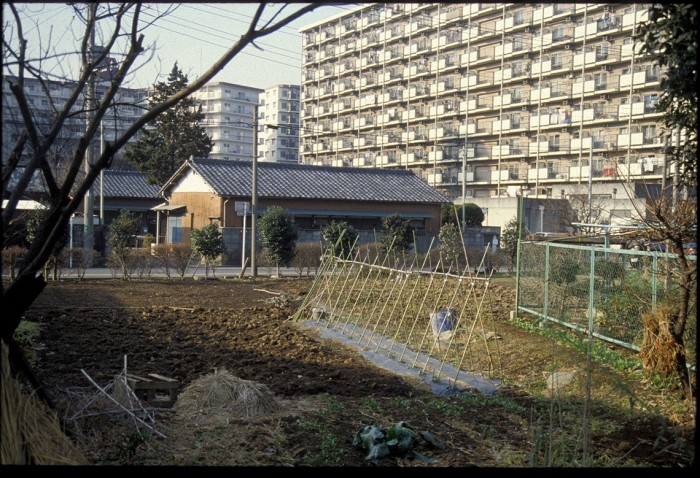
Since 1960, market gardening has been encouraged by the government as an alternative to rice cultivation which has long been seen as subject to low economic returns and to high price fluctuations due to over or under-production. Official policy encourages farmers to switch to money crops like vegetables and fruits. These often provide higher yields and larger profits.
Market gardening, however, is accompanied with higher risks. With strawberries, for example, the best return is obtained if the crop can be brought to market out of season. In order to do this, expensive hot houses and heating systems must be installed and maintained. Failure is liable to be far more disastrous than with rice which is, after all, subsidized. Some crops are new to Japan and pioneer farmers took the additional risk that consumers would not adapt to the new food product.

Gardens can be found within built-up, urban neighborhoods, some very close to city centers. As urban growth spreads into farming areas, individual fields or farms may become completely surrounded by dwellings and the irrigation system required by rice cultivation disappears. Small plots growing vegetables, or sometimes even rice, stand in stark contrast to houses and high-rise apartments. The government’s tax policy has permitted, even encouraged, this odd mixture of land use. It allows a lower rate of taxation on agricultural land, even if it is located well inside urban areas. This permits farmers to hold on to land at very low tax rates, waiting for the price to rise to astronomical levels before selling to developers.
For those farmers who have turned to market gardening, the rewards can prove extremely profitable, especially for those located closest to the markets in the big cities. Compared to the single crop produced each year by rice farmers, market gardeners can expect upwards of ten crops from the same piece of land. The problem with such intensive cultivation, however, is that it requires a full-time commitment from farmers. The trend away from full-time farming in recent decades suggests that many farmers are no longer prepared to give such commitment, and the pace of change from rice to market gardening will not be as fast as it could be.

